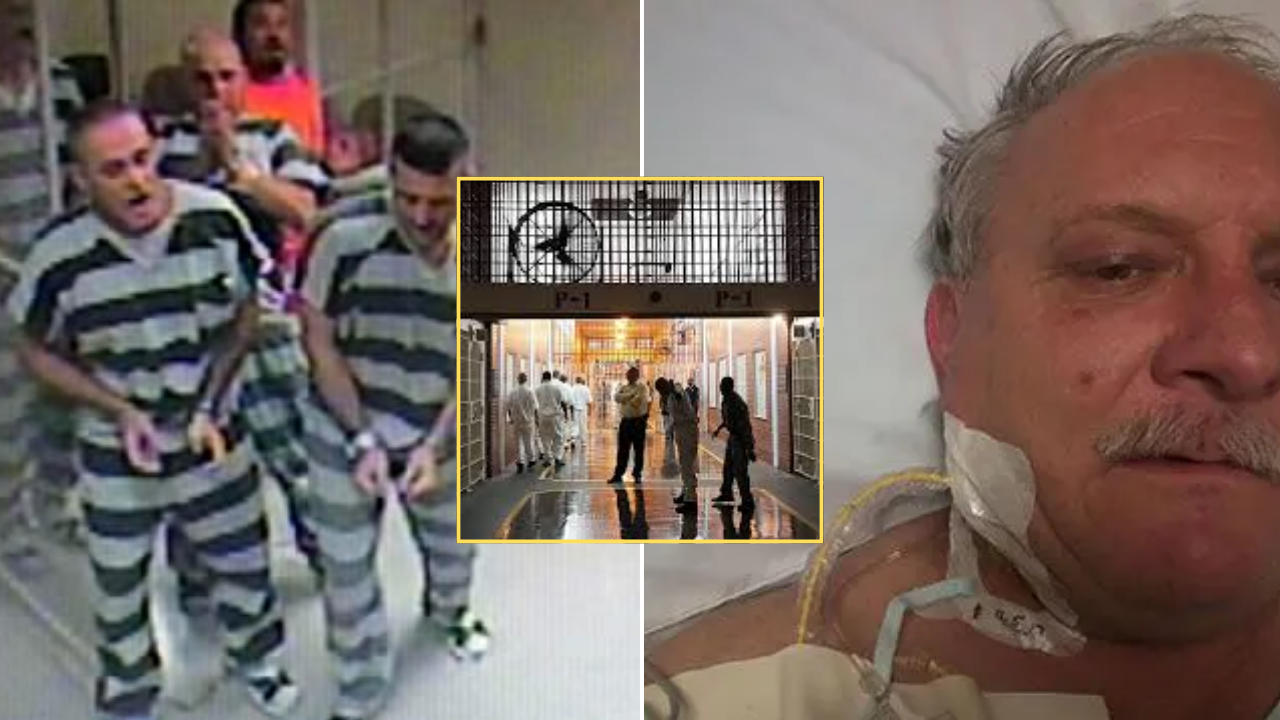Inmates Break Out to Save Guard Suffering Heart Attack in Texas Jail
In a remarkable display of humanity, a group of inmates at the Parker County District Courthouse in Weatherford, Texas, took swift action to save a guard who suffered a heart attack. The incident, which occurred on June 23, 2016, highlights the complex dynamics within correctional facilities and challenges common perceptions of inmate behavior.
The Incident Unfolds
On that day, 52-year-old guard Gary Grimm was overseeing eight inmates in a basement holding cell. After sharing a lighthearted moment with the prisoners, Grimm suddenly collapsed, losing consciousness. Initially, the inmates thought he was joking, but it quickly became evident that he was in serious distress. Realizing the gravity of the situation, the inmates began shouting for help. When their calls went unanswered, they decided to take matters into their own hands. Despite being shackled, they managed to force open the door to their holding cell, a move that could have been perceived as an escape attempt under different circumstances. Their commotion attracted the attention of deputies upstairs, who rushed to the scene. Upon arrival, the deputies found the inmates standing over the unconscious Grimm, ensuring he was safe and attempting to render aid. The officers immediately called for medical assistance and began performing CPR on Grimm. Thanks to the inmates’ quick actions, Grimm was revived and later expressed profound gratitude towards them. Reflecting on the incident, he stated, “Instead of overtaking me and taking my gun, and killing me or taking a hostage and escaping, they looked at me as a human being.”
A Deeper Look into the Inmates’ Actions
The inmates involved in this incident were awaiting court appearances for various offenses, many related to drug charges. One of the inmates, Nick Kelton, emphasized that their immediate reaction was driven by basic human decency. He remarked, “It never crossed my mind not to help whether he’s got a gun or a badge. If he falls down, I’m gonna help him.”
This event challenges the often one-dimensional portrayal of inmates in the media and public discourse. It underscores the idea that, despite their circumstances, many incarcerated individuals retain a strong sense of empathy and moral judgment.
Implications for Correctional Facility Protocols
In the aftermath of the incident, the holding cell’s door was reinforced to prevent similar breaches in the future. While this measure addresses security concerns, it also raises questions about the balance between maintaining safety and recognizing acts of goodwill. The inmates’ decision to break out of their cell was a calculated risk, prioritizing the guard’s life over potential repercussions.
Authorities acknowledged that the situation could have escalated dangerously if the inmates had harbored ill intentions. Sgt. Ryan Speegle noted, “He had keys. Had a gun. It could have been an extremely bad situation.”
Reflections from the Guard
Gary Grimm, who retired in December 2016 due to his heart condition, has since undergone multiple medical procedures, including open-heart surgery. He remains deeply moved by the inmates’ actions, stating, “I get emotional. If they wished harm for me, all they had to do was sit there and do nothing.”
Grimm’s experience offers a nuanced perspective on the relationships between guards and inmates. Throughout his 20-year career, he maintained that treating inmates with respect was paramount. “I don’t care if they’re a drug user, hot check writer, or child molester. They’re still a human being. I don’t have to like what they did, but it’s not my position to be the judge and jury,” he asserted.
Broader Implications
This incident serves as a poignant reminder of the shared humanity that can exist within correctional facilities. It challenges the often adversarial narrative between inmates and guards, suggesting that mutual respect and empathy can lead to life-saving actions.
Moreover, it prompts a reevaluation of policies within jails and prisons. While security is undeniably crucial, recognizing and fostering positive behavior among inmates can contribute to a more rehabilitative environment.
Conclusion
The events at the Parker County District Courthouse in June 2016 highlight the complexity of human behavior within the criminal justice system. The inmates’ decision to intervene during a life-threatening emergency, even at potential risk to themselves, underscores the capacity for compassion and moral action, regardless of one’s circumstances.
As discussions about prison reform and inmate rehabilitation continue, this incident offers valuable insights into the potential for positive interactions and the importance of viewing inmates as multifaceted individuals capable of both wrongdoing and profound acts of kindness.
